Beet and Tahini Hummus
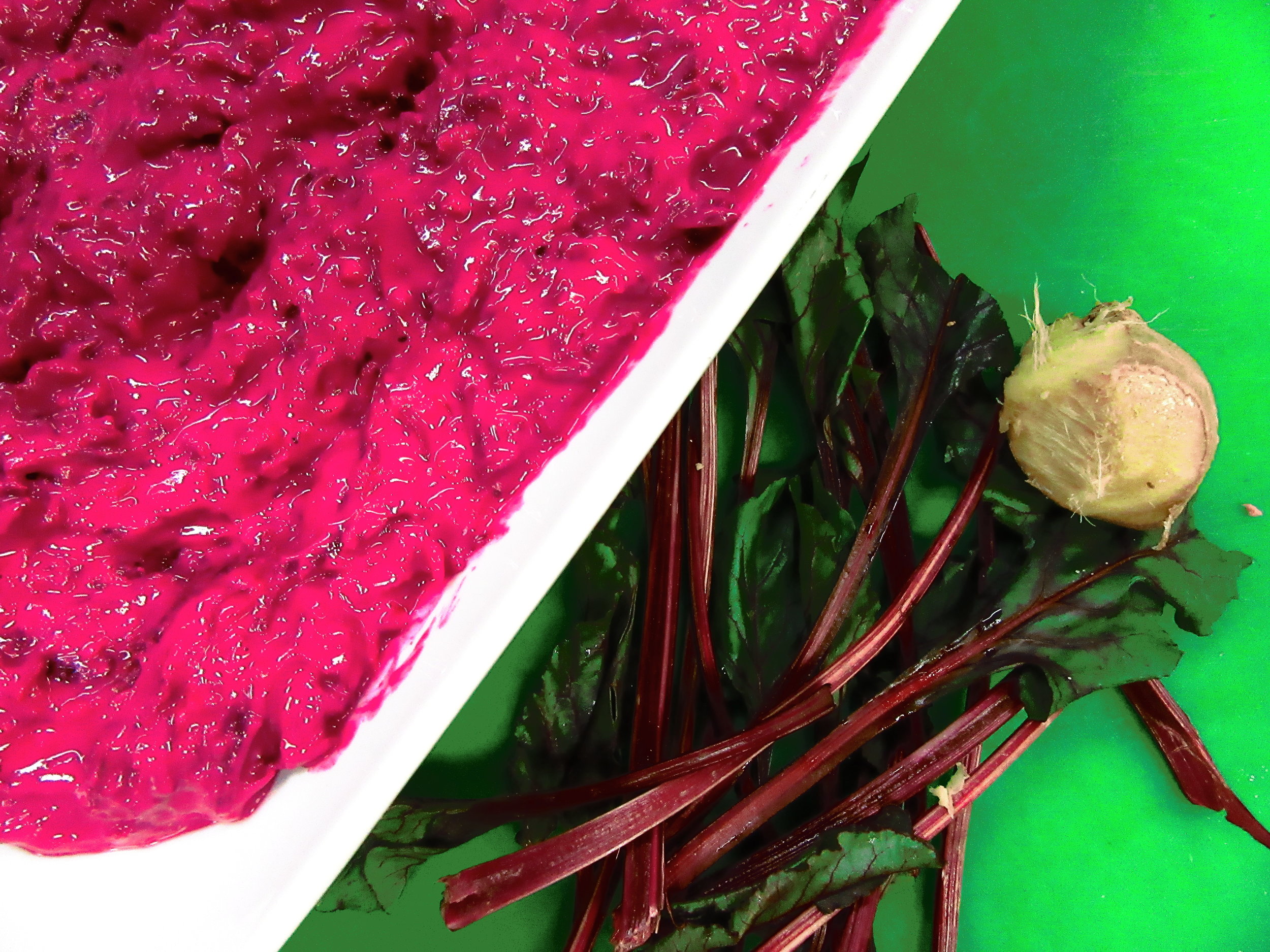 The other day I was making beet spread and some of the juice stained my blouse with beautiful color. That stain reminded me of how my aunt used to color wheat stalks when she wove her baskets. She used beet juice, which had the most brilliant red color I ‘ve ever seen. I used watch her boil the beet, then squeeze the juice out of them and use that juice to color her wheat stalks.Beet originally came from plants in the Mediterranean and the Red Sea. The first mention of these sea plants appeared in an Assyrian text describing their planting in the hanging gardens of Babylon around 800 B. C. Babylon. The ancient Greeks presented beets as one of their offerings to the sun god Apollo. The earliest Greek name for beets was “teutlon,” most likely because their foliage resembled squid tentacles. Until the 3rd century, people concentrated on the leaves of beets and left the root alone. The Romans were the first to use the roots for medicinal purposes. They were used as a curative broth to treat fevers and other ailments . The first mention of using beet roots in cooking was in a cookbook in the fifth century A.D. written by Marcus Gavius, a Roman gourmet.The Romans took the beet plant to every corner of their empire, which resulted in the spread of beets throughout Europe. The beet fell into obscurity of a time in the Middle Ages until an Italian physician and gourmand, Bartolomeo Sacchi, worte a book entitled, “On Right Pleasure and Good Health”. It was the first modern Italian diet and cookbook. He described using the leaves of the beet for sauce, and the root for sweetening one’s breath after eating garlic. From that time onward, agronomists began experimenting with beets to improve the variety.In the Levant, pickled white turnips and cabbage are turned pink with the addition of a partial beet root in the jar. I use beet in salad, soup and fantastic healthy hummus.
The other day I was making beet spread and some of the juice stained my blouse with beautiful color. That stain reminded me of how my aunt used to color wheat stalks when she wove her baskets. She used beet juice, which had the most brilliant red color I ‘ve ever seen. I used watch her boil the beet, then squeeze the juice out of them and use that juice to color her wheat stalks.Beet originally came from plants in the Mediterranean and the Red Sea. The first mention of these sea plants appeared in an Assyrian text describing their planting in the hanging gardens of Babylon around 800 B. C. Babylon. The ancient Greeks presented beets as one of their offerings to the sun god Apollo. The earliest Greek name for beets was “teutlon,” most likely because their foliage resembled squid tentacles. Until the 3rd century, people concentrated on the leaves of beets and left the root alone. The Romans were the first to use the roots for medicinal purposes. They were used as a curative broth to treat fevers and other ailments . The first mention of using beet roots in cooking was in a cookbook in the fifth century A.D. written by Marcus Gavius, a Roman gourmet.The Romans took the beet plant to every corner of their empire, which resulted in the spread of beets throughout Europe. The beet fell into obscurity of a time in the Middle Ages until an Italian physician and gourmand, Bartolomeo Sacchi, worte a book entitled, “On Right Pleasure and Good Health”. It was the first modern Italian diet and cookbook. He described using the leaves of the beet for sauce, and the root for sweetening one’s breath after eating garlic. From that time onward, agronomists began experimenting with beets to improve the variety.In the Levant, pickled white turnips and cabbage are turned pink with the addition of a partial beet root in the jar. I use beet in salad, soup and fantastic healthy hummus.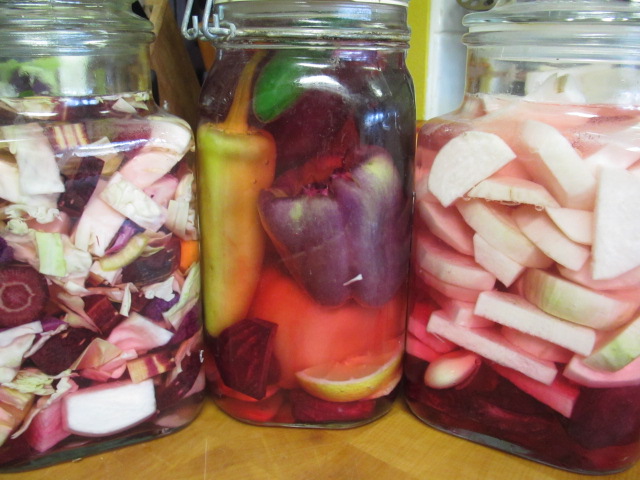 I start by peeling the beets and boil them with couple slices of lemons and fresh ginger.
I start by peeling the beets and boil them with couple slices of lemons and fresh ginger.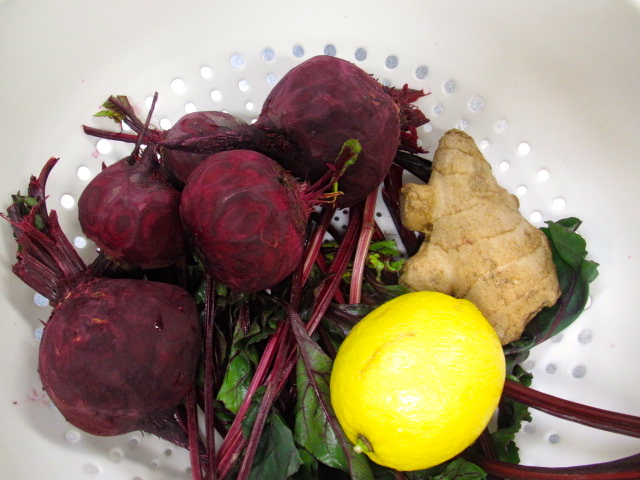 Shred the beet. Zest a lemon and grate fresh ginger and mix well.
Shred the beet. Zest a lemon and grate fresh ginger and mix well.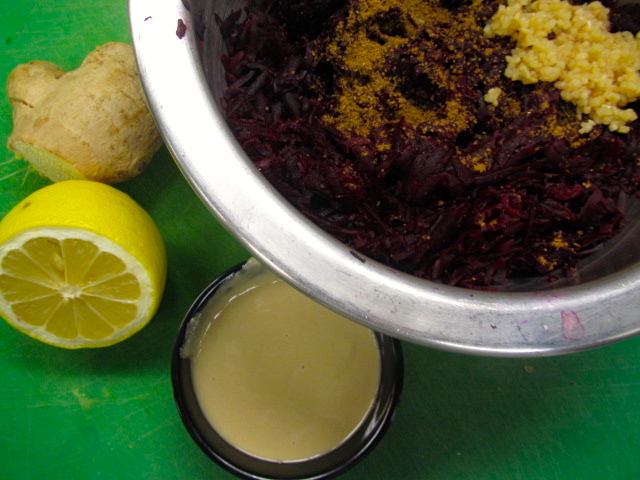 Add tahini, garlic, lemon juice, cumin and salt.
Add tahini, garlic, lemon juice, cumin and salt.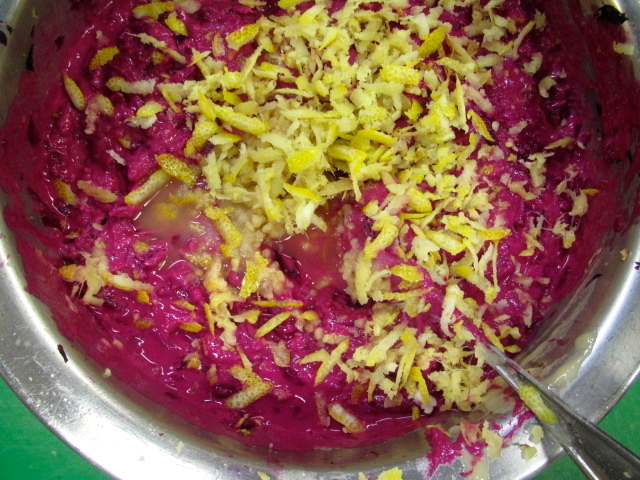
- 4 beets, cleaned and peeled
- 1 clove garlic, mashed
- 1 fresh lemon
- 2 inches long fresh ginger
- 1/4 cup tahini
- 1/2 cup lemon juice
- 1/4 teaspoon Aleppo pepper or cayenne pepper
- salt to taste
- Place the beets in heavy pot, add enough water to cover the beets.
- Zest the lemon, set the zest on the side. Cut the lemon into slices and add to the pot. Add couple thin slices to pot with the beets. Place the pot on a stove and bring to boil. Cook over medium heat until the beets are soft. Remove from the heat. Discard the lemon, the ginger and the water. Allow the beet to cool.
- Shred the beet, add the lemon zest, freshly grated ginger, the garlic, the lemon juice, the tahini, the pepper and the salt. Mix well and serve.
